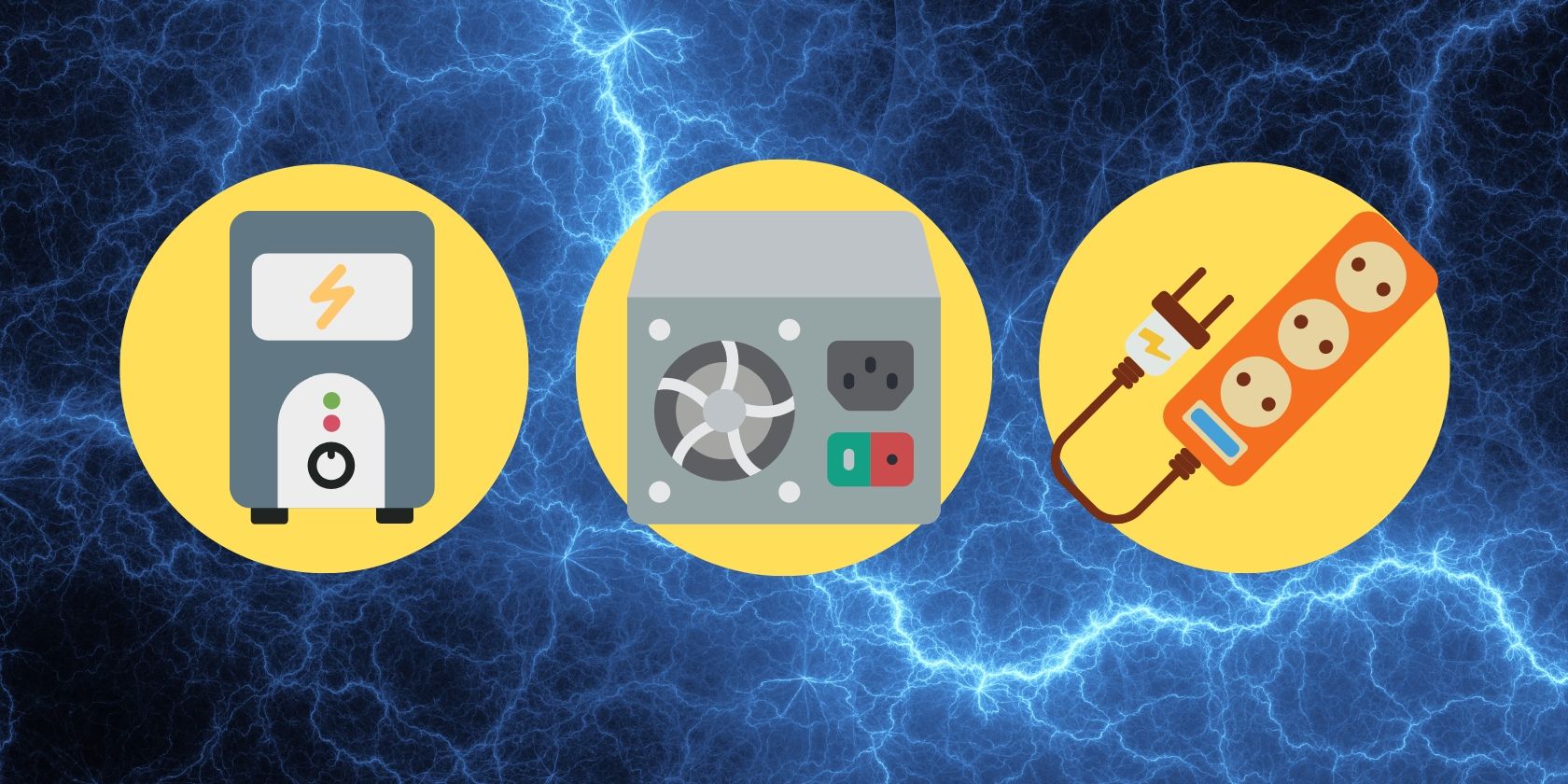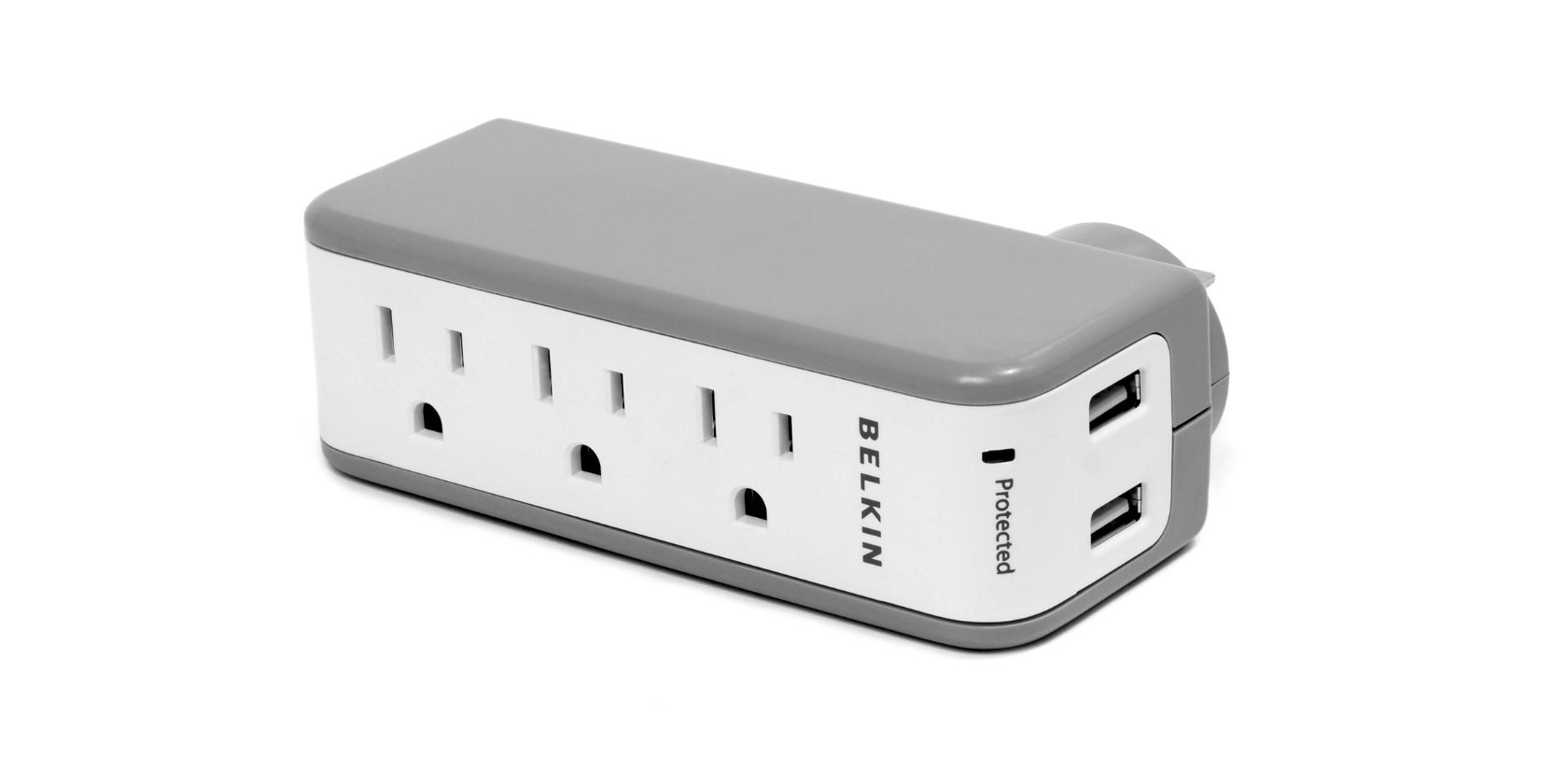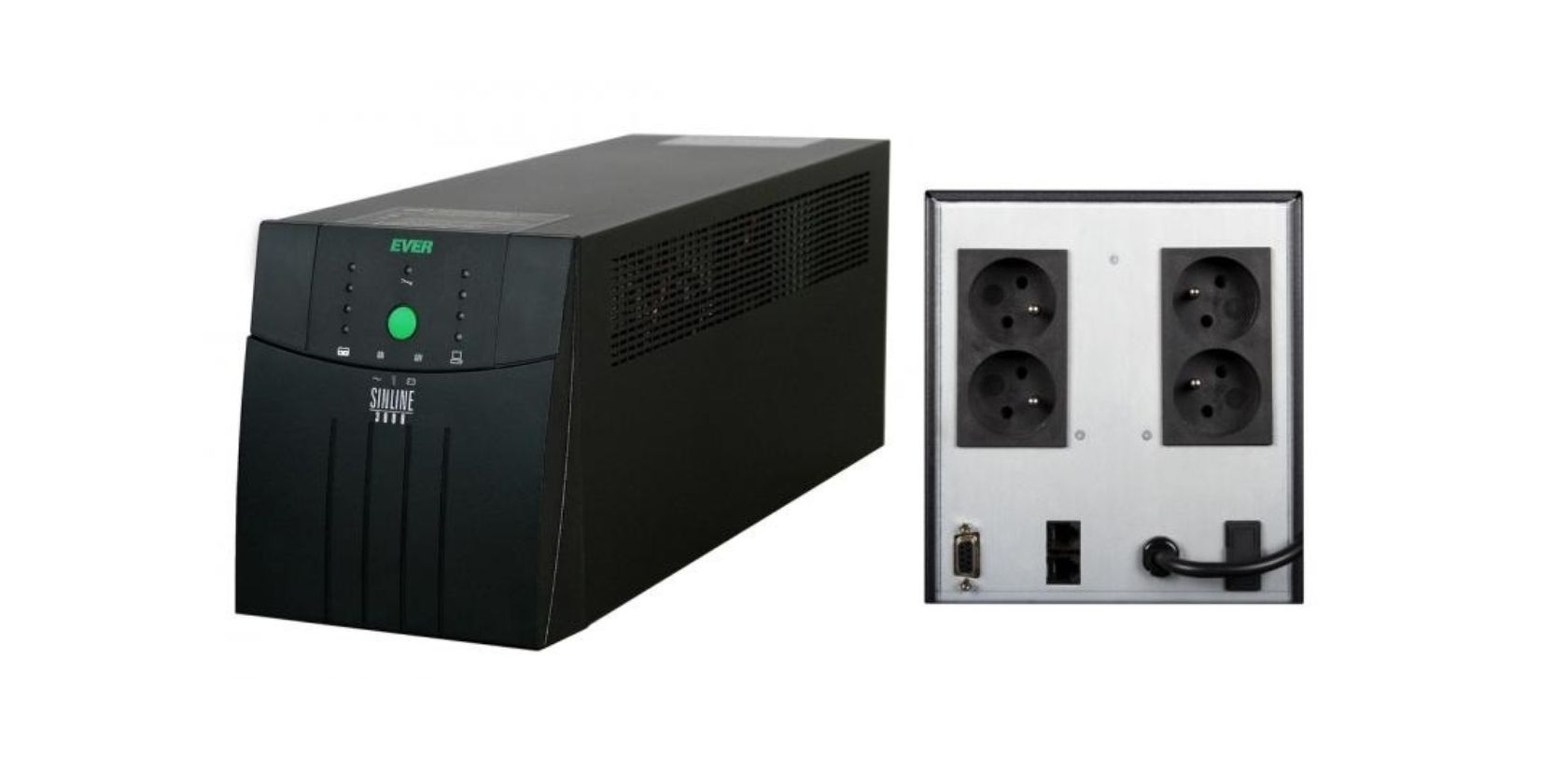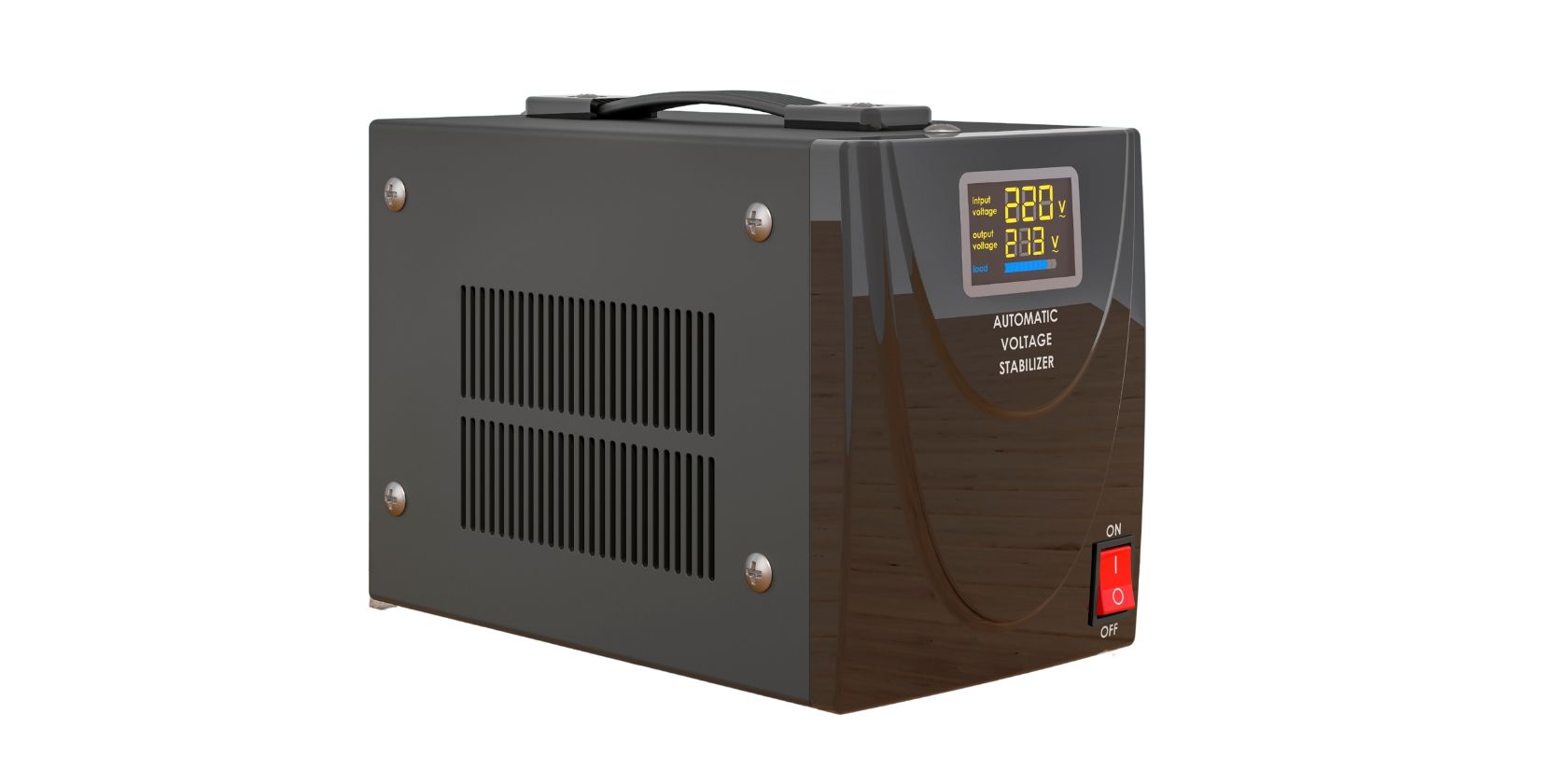Protection against electrical power disturbances ensures that we enjoy our devices without them picking up accidental or unexpected damage. Some of the most popular solutions for power disturbances are surge protectors, uninterruptible power supplies (UPS), and automatic voltage regulators (AVR).
But what exactly do these devices do? How do they work, and what device is best for your use case scenario?
What Is a Surge Protector?
A surge protector is an inexpensive device that protects your appliances from power surges and power spikes. Unfortunately, these occurrences can wreak havoc on your electronic devices.
A surge protector will divert the extra voltage away from your devices and safely discharge it through the ground terminal. Depending on the severity of the power surge, the surge protector may cause a breaker to trip (which you can reset afterward). It prevents your expensive electronics from being damaged.
Surge protectors are designed to be shut off when the power returns to normal. The surge protector is then turned back on when the next surge hits. Power surges often occur after a brownout or blackout. To prepare for incoming post-brownout power surges, surge protectors have delayed shutoff timers which you can set, so your devices won’t be affected when the expected power surge occurs.
What Is an Uninterruptible Power Supply (UPS)?
A UPS is a device that provides a steady flow of electricity and protects your computer from power outages, surges, spikes, and general electrical noise. These devices are called UPS or uninterruptible power supplies because they provide consistent power during power disturbances.
These devices are often used in business settings that rely heavily on computers and other sensitive electronics to continue operation.
A UPS comprises a battery management system, a battery (often lithium-ion or lithium-polymer), a power inverter, and a switch that automatically switches between primary to battery power.
When a power failure occurs, the switch within the unit automatically switches the power source from the grid to the backup battery. The device is continually powered (for a period) until the battery is depleted. The time will vary depending on the size and capacity of the battery stored within the UPS.
Although primarily with computers, a UPS can also power other devices, such as a gaming console and TV. During a power outage, some UPS can also be used to charge various devices and act like a power bank.
What Is an Automatic Voltage Regulator (AVR)?
An automatic voltage regulator (AVR) device is a device that can help protect your electronics from power surges, outages, and fluctuations.
AVRs are most commonly used in commercial buildings, but they’re also becoming more common in regular households.
AVRs follow an error detection process that actively compares the normal or set voltage of the incoming power and will either regulate or shut down the transmission of power to your device if the voltage is too high. For power fluctuations where voltage rapidly drops and spikes, an AVR uses the same detection process and stabilizes the power with its step-up and step-down power converters.
Surge Protector vs. UPS vs. AVR
Surge protectors, UPSs, and AVRs are all voltage-regulating devices. Although all protect your devices against certain power disturbances, the amount of protection you get from each device will vary.
Surge protectors offer the lowest level of protection against electrical disturbances. They can only protect against electrical surges and spikes and do not provide any protection against electrical noise and power outages. They are, however, small, inexpensive, and quite packable in case you decide to go on a trip and need to protect your devices.
AVRs are voltage-regulating devices that not only protect your devices from power surges but also from power fluctuations that are common in households. Protecting against power fluctuations ensures that your device gets a steady amount of power which can extend the life of your electronic devices. AVRs are often heavier, bigger, and more expensive than surge protectors and are a great middle option between a surge protector and a UPS.
A UPS provides the highest level of protection against power disturbances and is the heaviest and most expensive of the three voltage regulators. A UPS can protect against power surges, power outages, power fluctuations, and electrical noise. Unlike the other two devices, a UPS can also provide continuous backup power for quite some time. For these reasons, UPSs are often used in data centers, hospitals, and government facilities to ensure that data and progress are saved before shutting down or the primary backup power kicks in.
Which Device Better Fits Your Needs?
Although they only protect against power surges, surge protectors are small, inexpensive, and provide the most outlets. Having a couple around the house is a great way to provide surge protection for delicate appliances such as TVs, consoles, and computers. Surge protectors are also good options for those on a budget who want a layer of protection for their devices.
AVRs are great options for those looking to protect their devices from power surges and fluctuations. However, due to their size and the limited number of outlets (usually one to three) they provide, they are better suited for more sensitive appliances and electronics such as computers, game consoles, and TVs.
A UPS provides the highest level of protection at the cost of being bulky, heavy, and expensive. Due to these limitations, a UPS is best used for computers and other sensitive equipment you rely heavily upon.
Why Choose One When You Can Have All?
Surge protectors, AVRs, and UPSs provide varied levels of protection at different price points, sizes, and weights. Having all three would be best since different electronic devices are more susceptible to specific power disturbances than others.
A UPS for your work computer, an AVR for your TV and gaming console, and a surge protector for various home appliances would be a cost-effective way to provide suitable protection to all of your devices within the household. Of course, if you cannot afford it yet, there’s no need to buy everything all at once. This setup should be more of an ideal goal setup that you can slowly build over time.





